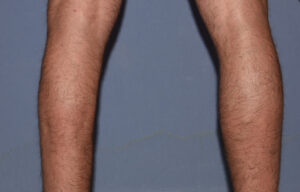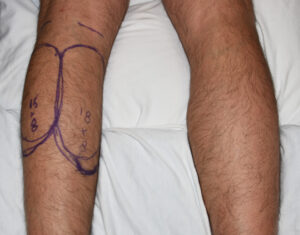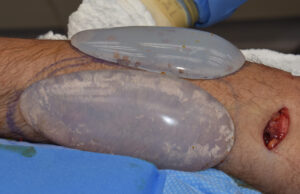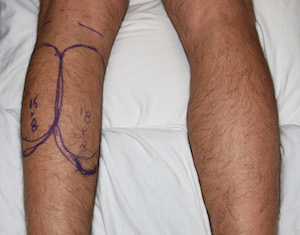Background: The calf muscles, also known as the gastrocnemius muscles, makes up the back part of the leg between the knee and ankle. It is a two-headed muscle with an inner (medial) and outer (lateral) head that extends downward to form a common Achilles tendon which attaches onto the back part of the heel bone. (calcaneus)
Because of the stout tendinous attachment at the heel bone, Achilles tendon injuries ultimately affect the calf muscles as well. Through either inactivity (recovering from surgical tendon repair) and/or a change in tendon length between the end of the muscle and the bone, calf muscle deficits are well known to occur both in the short and long term. In many Achilles rupture patients full calf muscle strength and size may never fully recover despite maximal rehabilitation efforts.
When the origin of calf asymmetry is traumatic-induced muscle atrophy, the aesthetic appearance of it is often more significant than concerns about muscle weakness. Rebuilding calf volume can be done by either injection fat grafting or calf implants. Each has their advantages and disadvantages. The main advantage of implants is their assured permanent volume effects.




Case Highlights:
1) Achilles tendon injuries can result in some permanent loss of calf muscle size.
2) Calf asymmetry due to muscle atrophy can be improved using standard calf implants.
3) Since both heads of the calf muscle will undergo atrophy due to a common cause, medial and lateral calf implants are often needed.
Dr. Barry Eppley
Indianapolis, Indiana



